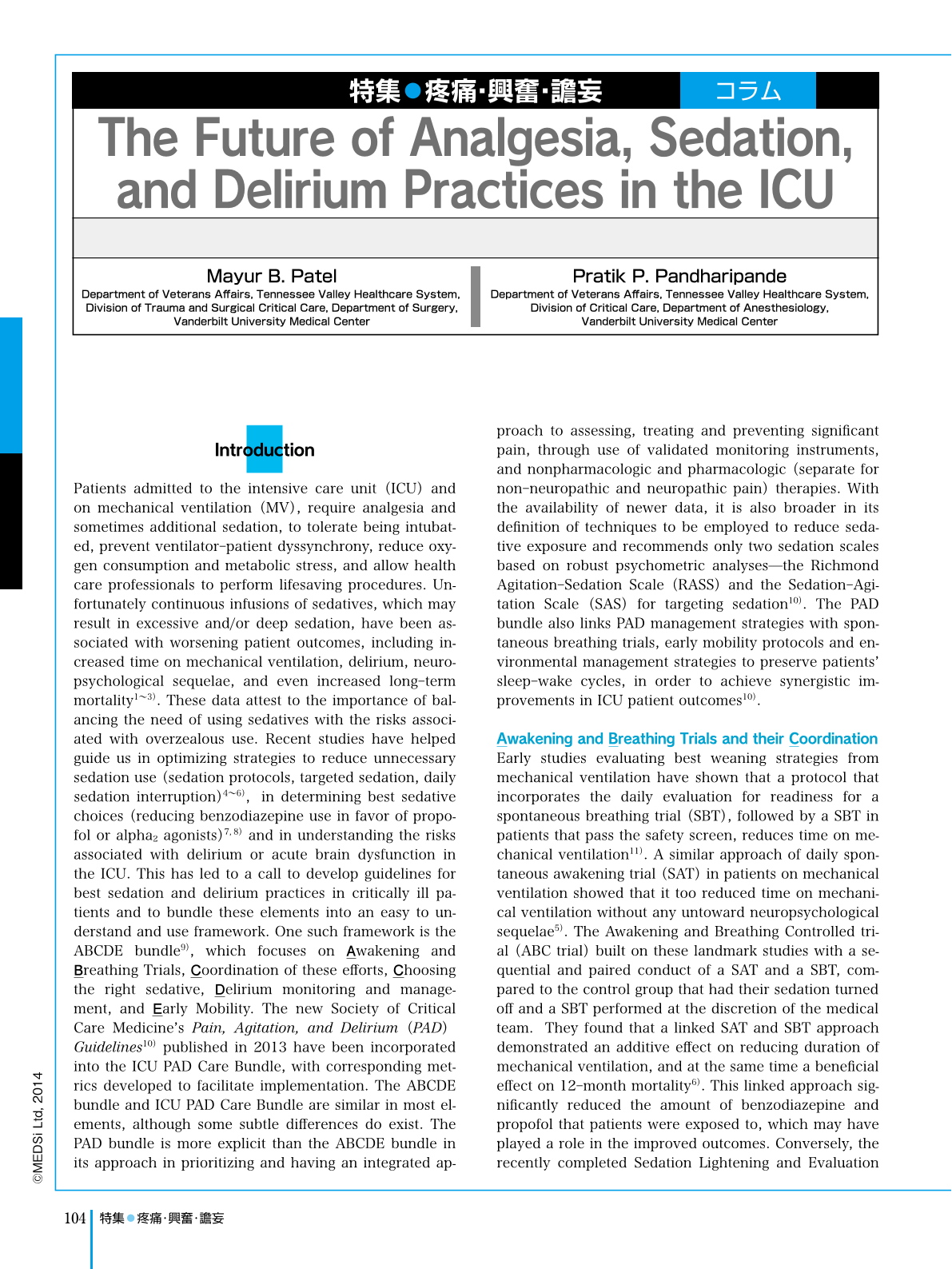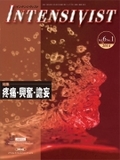- 有料閲覧
- 文献概要
- 1ページ目
- 参考文献
Introduction
Patients admitted to the intensive care unit (ICU) and on mechanical ventilation (MV), require analgesia and sometimes additional sedation, to tolerate being intubated, prevent ventilator-patient dyssynchrony, reduce oxygen consumption and metabolic stress, and allow health care professionals to perform lifesaving procedures. Unfortunately continuous infusions of sedatives, which may result in excessive and/or deep sedation, have been associated with worsening patient outcomes, including increased time on mechanical ventilation, delirium, neuropsychological sequelae, and even increased long-term mortality1~3). These data attest to the importance of balancing the need of using sedatives with the risks associated with overzealous use. Recent studies have helped guide us in optimizing strategies to reduce unnecessary sedation use (sedation protocols, targeted sedation, daily sedation interruption)4~6), in determining best sedative choices (reducing benzodiazepine use in favor of propofol or alpha2 agonists)7,8) and in understanding the risks associated with delirium or acute brain dysfunction in the ICU. This has led to a call to develop guidelines for best sedation and delirium practices in critically ill patients and to bundle these elements into an easy to understand and use framework. One such framework is the ABCDE bundle9), which focuses on Awakening and Breathing Trials, Coordination of these efforts, Choosing the right sedative, Delirium monitoring and management, and Early Mobility. The new Society of Critical Care Medicine's Pain, Agitation, and Delirium (PAD) Guidelines10) published in 2013 have been incorporated into the ICU PAD Care Bundle, with corresponding metrics developed to facilitate implementation. The ABCDE bundle and ICU PAD Care Bundle are similar in most elements, although some subtle differences do exist. The PAD bundle is more explicit than the ABCDE bundle in its approach in prioritizing and having an integrated approach to assessing, treating and preventing significant pain, through use of validated monitoring instruments, and nonpharmacologic and pharmacologic (separate for non-neuropathic and neuropathic pain) therapies. With the availability of newer data, it is also broader in its definition of techniques to be employed to reduce sedative exposure and recommends only two sedation scales based on robust psychometric analyses―the Richmond Agitation-Sedation Scale (RASS) and the Sedation-Agitation Scale (SAS) for targeting sedation10). The PAD bundle also links PAD management strategies with spontaneous breathing trials, early mobility protocols and environmental management strategies to preserve patients' sleep-wake cycles, in order to achieve synergistic improvements in ICU patient outcomes10).

Copyright © 2014, "MEDICAL SCIENCES INTERNATIONAL, LTD." All rights reserved.


